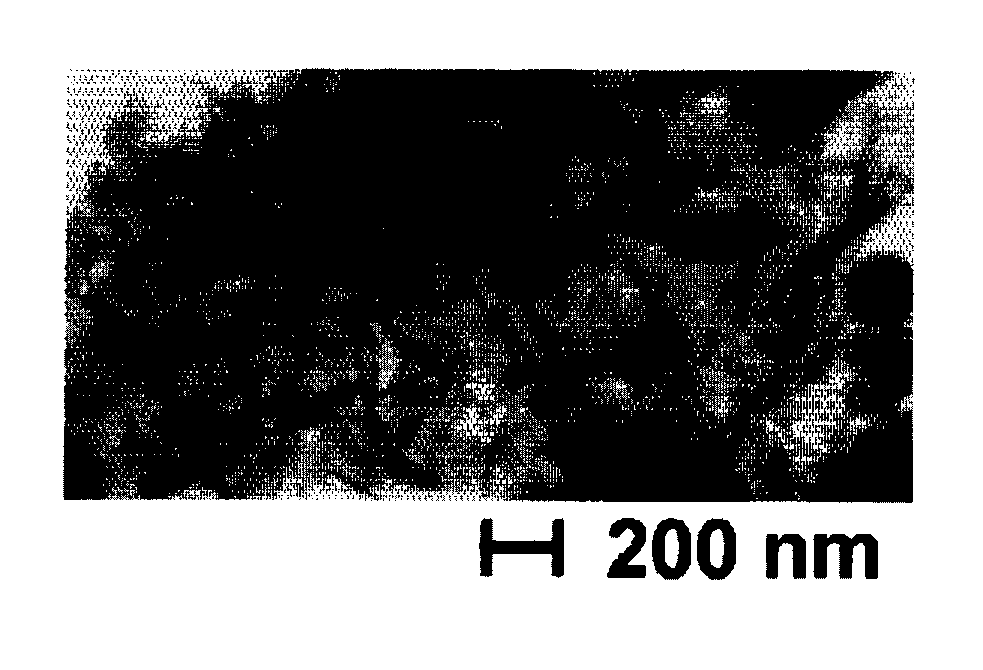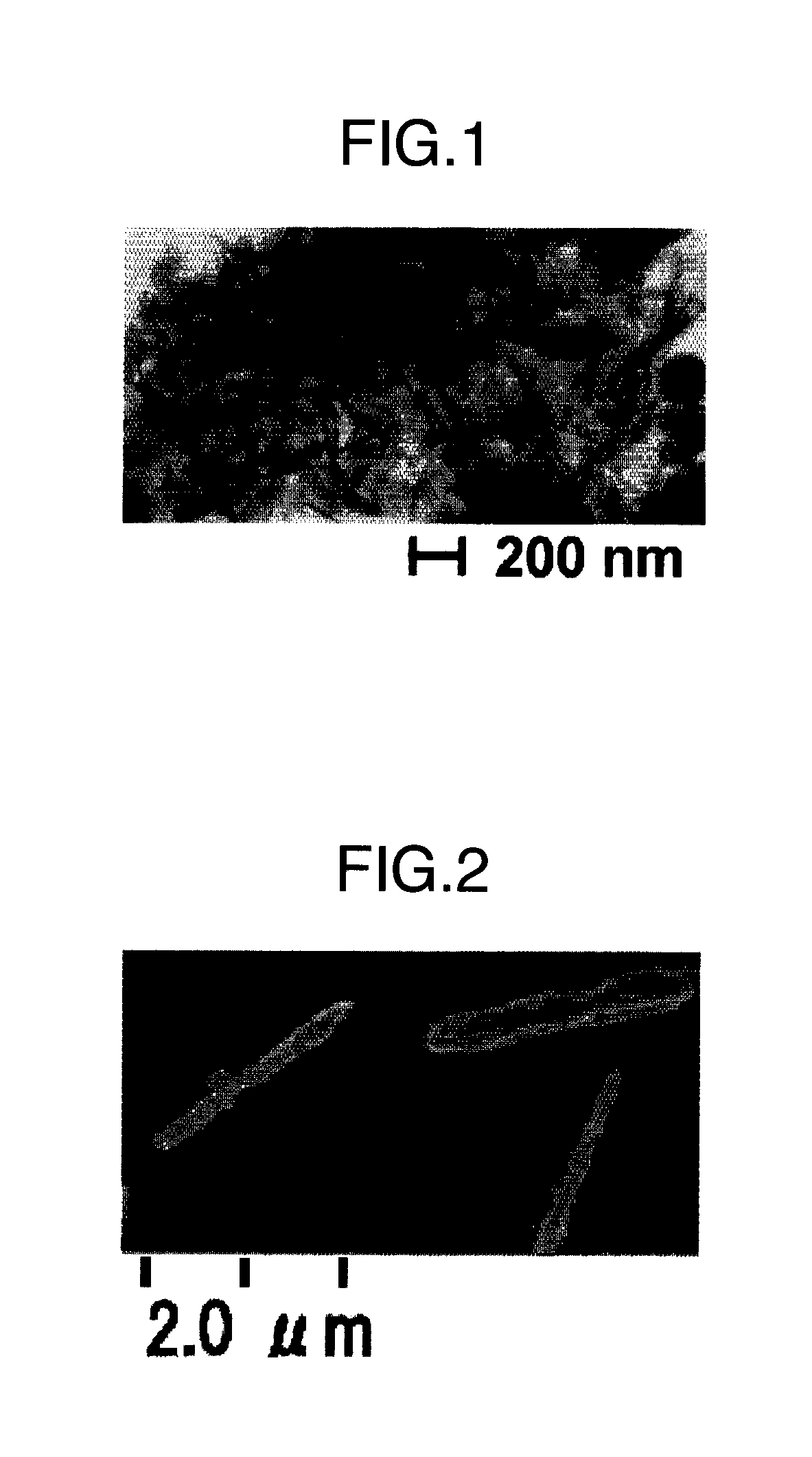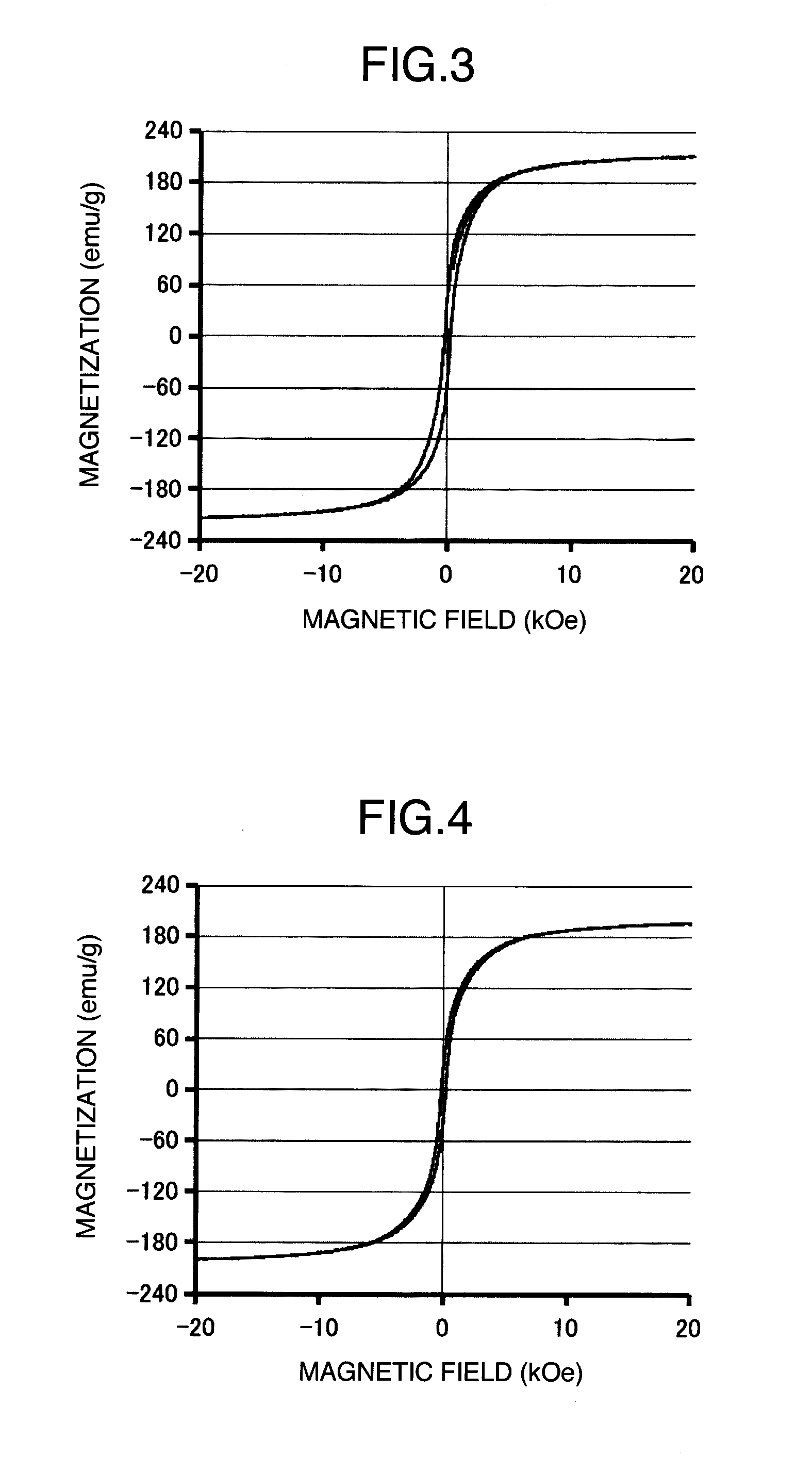Alcoholic Solution and Sintered Magnet
- Summary
- Abstract
- Description
- Claims
- Application Information
AI Technical Summary
Benefits of technology
Problems solved by technology
Method used
Image
Examples
example 1
[0030]Precursors used are iron II chloride tetrahydrate (Fe(Cl)2.4H2O) as a Fe salt, and cobalt (II) acetate tetrahydrate (Co(CH3COO)2.4H2O) as a Co salt. A reducing agent used is ethylene glycol (EG). EG can be used as a solvent. EG is dehydrated with molecular sieves so as to have a water content of about 50 ppm. EG can be converted into acetaldehyde by a dehydration reaction such as 2C6H6O2→C2H4O+2H2O. Acetaldehyde can be condensed to form a diacetyl as in 2C2H4O→C4H6O2+H2, and electrons are generated on this occasion. Metal ions are reduced by these electrons to obtain metal particles. In the meantime, it is known that a formation of an aldehyde group is promoted by an addition of NaOH, and thus NaOH is added. Further, dimethylamine-borane ((CH3)2NH.BH3) was added as a reducing agent. In this Example, EG of 300 ml, a Fe complex of 0.008 mol / L, a Co complex of 0.002 mol / L, NaOH of 0.2 mol / L and dimethylamine-borane of 0.001 mol / L are used, and are kept warm at 140° C. in a magnet...
example 2
[0045]To EG of 300 ml, iron II chloride tetrahydrate (Fe(Cl)2.4H2O) of 0.045 mol / L and cobalt II acetate tetrahydrate (Co(CH3COO)2.4H2O) of 0.005 mol / L and NaOH of 0.2 mol / L were added. Temperature was raised from room temperature up to 140° C. over 1 hour, and kept warm at 140° C. for 3 hours. Then, in order to avoid a formation of a hydroxide such as [Fe(H2O)6]2+ and [Fe(H2O)4(OH)2], 2,2′-bipyridyl (C10H8N2) of 0.02 mol / L was added. When it was cooled to room temperature, red particles were precipitated. They were washed with water to detach a bipyridyl ligand. Thereby, magnetite having a minor axis of from 20 to 50 nm and a major axis of from 0.5 to 2.0 μm is obtained.
[0046]FIG. 2 shows a scanning electron microscopic picture of the FeCo alloy particles. The FeCo-based particles having a bcc structure were obtained by aging the above magnetite at 300° C. in a hydrogen atmosphere. Rare earth fluoride particles were coated onto the particles by the procedures described at Example 1...
example 3
[0048]Precursors used are iron (III) acetylacetonato (Fe(C5H7O2)3) of 0.07 mol / L as a Fe salt, and cobalt (II) acetylacetonato (Co(C5H7O2)2) of 0.03 mol / L as a Co salt. A solvent added is phenyl ether (C12H10O) of 100 ml, a protecting agent added is oleyl amine (C18H37N) of 5 ml and oleyl acid (C18H34O2) of 6 ml, and a reducing agent added is 1,2-hexadecanediol (C16H34O2) of 0.15 mol / L. In the synthesis, a magnetic field of from 300 to 500 mT was applied, kept warm at 240° C. for 1 hour with allowing Ar as a carrier gas to flow in, and then Tb(CH3COO)3.4H2O and ammonium fluoride of 0.01 mol / L and 0.015 mol / L, respectively, were charged to further keep warm for 2 hours. Thereby, FeCo based particles, which have a BCC structure and a minor axis of about 20 nm and a major axis of about 0.5 μm and coat TbF, were obtained. Curie point exceeds 900° C., and a magnetic flux saturation density became 172 emu / g. Fe:Co weight ratio was Fe:Co=65:35 according to an energy dispersive X-ray fluore...
PUM
| Property | Measurement | Unit |
|---|---|---|
| Fraction | aaaaa | aaaaa |
| Fraction | aaaaa | aaaaa |
| Fraction | aaaaa | aaaaa |
Abstract
Description
Claims
Application Information
 Login to View More
Login to View More - R&D
- Intellectual Property
- Life Sciences
- Materials
- Tech Scout
- Unparalleled Data Quality
- Higher Quality Content
- 60% Fewer Hallucinations
Browse by: Latest US Patents, China's latest patents, Technical Efficacy Thesaurus, Application Domain, Technology Topic, Popular Technical Reports.
© 2025 PatSnap. All rights reserved.Legal|Privacy policy|Modern Slavery Act Transparency Statement|Sitemap|About US| Contact US: help@patsnap.com



